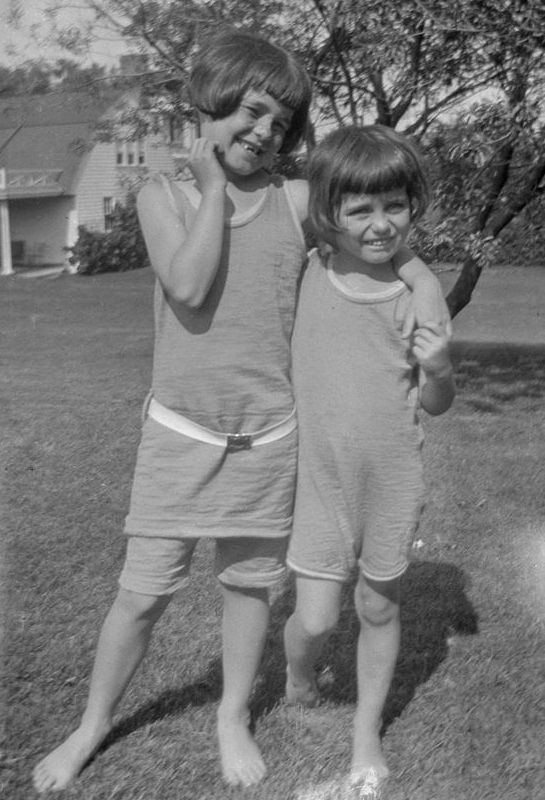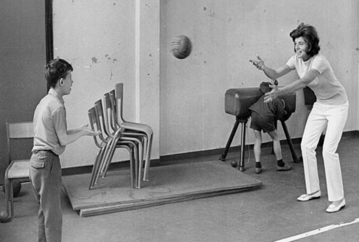Last updated: March 28, 2024
Article
John Fitzgerald Kennedy National Historic Site's 2024 Reopening: Renovations, Improving Accessibility, and the Kennedy Family’s Historic Commitment to Preservation and Advocacy for Inclusion
"The time to repair the roof is when the sun is shining."
- President John F. Kennedy

NPS Photo.
Why was the site closed?
At the end of the 2019 visitor season, John Fitzgerald Kennedy National Historic Site closed and the collections were removed or protected for anticipated renovations. The renovations namely included the installation of an accessible visitor center, and other needed maintenance. The renovations were scheduled to begin in early 2020 but, due to the COVID-19 pandemic and associated compilcations, the work began in early 2022 and finished in late 2023. The site softly reopened to the public from September 30 through November 18, 2023, and, beginning in early June 2024, the site will reopen for its first full open season since 2019.
Since the site’s opening in 1969, few major renovations have taken place. In 1986, there was a structural project to repair basement floors and improve an exterior staircase. During this time, a small visitor center and retail shop were installed in the basement of the home. As time passed, the 1986 visitor center had become dated and was always inaccessible to many visitors with disabilities. Therefore, significant renovations to the visitor center were needed to improve the space for the visiting public.
Interestingly, one of the Kennedy family’s greatest legacies has been their groundbreaking work in supporting those with disabilities. In this spirit and with the National Park Service’s own mission of improving accessibility and inclusion for all, the park made the decision of closing down the site temporarily so that this important work could happen.

Steven L. Markos
Federal Accessibility Requirements and Site Renovations
In 1967, Mrs. Rose Kennedy began the process of renovating and redecorating the house back to its 1917 appearance. In the course of her work, the 1968 Architectural Barriers Act (ABA) was passed. These laws required all buildings and facilities built or renovated with federal funds to be accessible to, and usable by, people with disabilities. Since the work on this site was completed through the generous donation of the Kennedy family, the ABA laws were not enforced.When a visitor center was installed in 1986, it is not entirely clear why accessibility concerns were not addressed. Perhaps, since the project was classified as a structural change as opposed to a functional change, ABA requirements would not have applied.
The balance between historic preservation and accuracy and adaptations for visitor accessibility and safety is a key part of historic site management, and some barriers to the home itself remain. To that end, staff continue to ensure that the site’s website (www.nps.gov/jofi) offers an array of virtual access methods, such as audio-visual tours.
The addition of a newly accessible restroom, along with a staff bathroom, reduces the wait time that visitors often experienced prior to the renovations when only a one single-stall restroom existed. Visitors can also stay better hydrated with the installation of a water bottle fill station.
Other improvements include an upgraded storm drainage system, carpet replacement, a freshly painted interior and exterior, restoration of 40 historic windows and window sashes, replacement of the wooden gutter system and repair or replacement of the roof overhang, cedar side-wall shingles, a skylight, the porch roofing, flooring, and structural supports.

John F. Kennedy Presidential Library and Museum.
The Kennedys & Disability Rights Advocacy
As our site has transitioned into a phase of additional accessibility, it is important and relevant to reflect on how one of the Kennedy family’s greatest legacies has been their groundbreaking work in supporting those with disabilities, in addition to their personal experiences with both physical and intellectual disabilities.Though he presented a public image as a healthy and active young man, President John F. Kennedy dealt with lifelong chronic pain and poor physical health. As a child, he had many illnesses. At the age of two, and when he was still living in his birthplace home, he almost died of scarlet fever. Later, it was discovered he had Addison’s Disease. This disease affected his adrenal glands, weakened his immune system, and made him more prone to illness. He also had a congenital back problem, and, coupled with injuries sustained from athletics and his service during World War II, this resulted in his undergoing multiple back surgeries. These procedures resulted in extensive recovery periods and presented a variety of mobility challenges during his time in public office.

John F. Kennedy Presidential Library and Museum.
To help their daughter, the Kennedys searched for solutions. They learned of a new experimental procedure, a lobotomy. Assured by surgeons of the promise of a lobotomy’s success to reduce depression and aggressiveness, in November 1941, Mr. Kennedy arranged for the procedure to be performed on Rosemary. It was immediately evident that it had failed, leaving Rosemary without most of her ability to talk or walk. She remained institutionalized for the rest of her life, receiving specialized attention, but isolated from much of her family and the public eye.
Rosemary was deeply loved by her family and was a direct influence on many of them to devote their lives to the betterment of those born with disabilities. Her sister, Eunice Kennedy (later Shriver), however, was particularly close with Rosemary growing up and retained a special bond with her sister in adulthood. Eunice dedicated her life to improving the status and opportunities available to those with disabilities.

The Joseph P. Kennedy Jr. Foundation.
In 1961, Eunice opened Camp Shriver, a summer camp for children with intellectual disabilities. With the support and funding of the Joseph P. Kennedy Jr. Foundation, she championed the development of the Special Olympics, hosting the first games in 1968 in Chicago. Eunice received various honors for her work improving the lives of those with intellectual and physical disabilities, including the Presidential Medal of Freedom in 1984 and a papal knighthood in 2006. Although she was internationally recognized for her work with the disability community, she was not the only Kennedy to fight for these issues.
In 1946, Ambassador and Mrs. Kennedy founded The Joseph P. Kennedy Jr. Foundation, in memory of their eldest son, Joseph Jr., who had died in World War II. The Foundation supports academic research on intellectual and developmental disabilities, is a lobbying agency on behalf of those with intellectual disabilities, and annually hosts international awards, conferences, and events to promote the development of research related to intellectual disabilities.

John F. Kennedy Presidential Library and Museum.
He subsequently appointed a 27-member panel of doctors, scientists, and others to create a plan to address the possible cause of intellectual disabilities. On February 5, 1963, Kennedy gave a “Special Message to the Congress on Mental Illness” which outlined the panel’s more than 100 recommendations. This included: maternity and prenatal care, shifting care away from mental institutions to community-centered agencies, and plans for the construction of research centers that would include diagnostic, clinical, and treatment services. He also emphasized the importance of special education, training, and rehabilitation.
President Kennedy enacted many of the panel’s recommendations and provided funding for states’ intellectual disabilities programs, as well as maternity and infant care. A second bill he signed funded construction of facilities to care for the disabled, research centers, and teacher training. President Lyndon B. Johnson continued the Kennedy legacy through establishing the President's Committee for People with Intellectual Disabilities in 1966, which still acts as an advisory board to the Secretary of Health and Human Services today.
As the site reopens with new accessibility features, there is a promise to continue to work on identifying ways to increase accessibility in both our facility and available programming. This includes practicing inclusive storytelling regarding the Kennedy family and their legacy.
